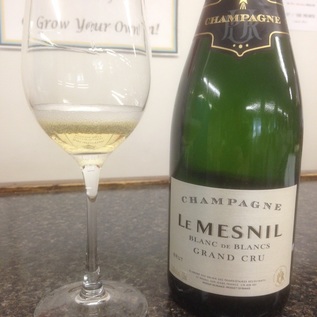 For the last Insider's Pick of our 22nd Anniversary celebration, we figured we should go out with a bang. Or a 'Pop!' Or, for the sommeliers out there, a bare audible 'pffft!' if you're opening it right. While sparkling wines are made across the world and are capable of great success, Champagne is the undisputed ruling class of the style and the ultimate celebratory drink. This isn't just about image (although the marketing of certain brands has definitely played a big part), as the Champagne region is one of the most extreme growing regions in the world. It is at the northenmost edge of where grapes can ripen consistently, and the soils carry much of the same chalky Kimmeridgian soil found in Sancerre, which gives the juice intense natural acidity. This acidity allows the wines to age better than any other sparkling wines in the world, especially the vintage bottlings which can last for many decades when properly stored. This Non-Vintage bottling is blended from several vintages for consistency batch to batch, and is built for immediate gratification. Today, if you wish. This Blanc de Blancs comes from the highly regarded township of Le Mesnil in the Cote des Blancs, a series of vineyards known for their exceptional Chardonnay. Deep, intensive bready and white fruit aromas pour out as soon as the bubbles start to subside, adding a touch of almonds as it opens up (and yes it is OK to let your Champagne breathe a little bit!). The fine mousse lingers on the palate to provide a bit of extra livliness behind the creamy, yeasty texture and complex tart citrus fruits that go on for what seems like minutes on the finish. It's hard to find true deals for quality Champagne in an era where some of the most overcropped and over-produced wines in France still go for north of $50, but this definitely delivers strength and quality that will help make any celebration, or any occasion you choose to drink it, that much more memorable.
0 Comments
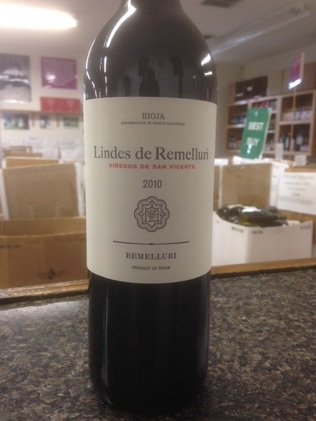 When people discuss the wines of Rioja, Remelluri is an estate that will always be a part of the discussion as it has a place in both the traditional and modern styles. The property itself has roots back to the beginnings of viticulture in the Rioja, with the 10th century ruins of a communal wine press carved into the surrounding rock outcropping. A monastic order carried out the winemaking for several centuries until the first Spanish Civil War in the late 1830s, and after the war the land was redistributed and sold. Much of the importance of the sire was lost by the fragmentation until 1967 when the Rodriguez family bought the core Labastida vineyard and began reassembling the original monastic holdings. Some of the more traditional estates have longer more uninterrupted ties to tradition which almost mandates them continue to make wines in a certain historical manner, but Remelluri embraces a 'New' Old School style, tweaking the old recipes and styles without obscuring them. One part of this tweaking has been the creation of their two 'Lindes' wines, recognizing the two adjacent villages to the estate, Labastida and San Vincente. The wines come from growers on opposite sides of the Remelluri property, and express different subtle personalities in the same way red and white Burgundy from Volnay show differences from adjacent Pommard. A traditional Rioja blend of red grapes (Tempranillo, Garnacha, and Graciano), as well as a touch of white grapes Viura and Malvasia, provide for a much more complex and subtle wine than the more modern and aggressively oaked Riojas. With just the slightest of flowery aromatics from the Malvasia, the white grape actually acts like the small portion of Viognier does in a Northern Rhone red, pumping up the dark fruits and graphite tones. ON the palate the Old School vibe brings lots of polished fine tannins and savory dark fruit skins, while the white grapes take a bit of the extracted weight out, allowing a silkier, more ethereal finish. A serious Rioja that doesn't cost serious money. 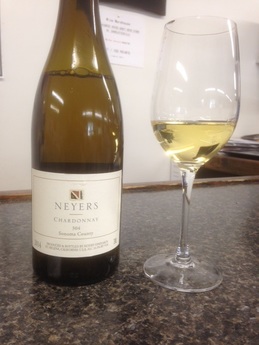 One of our favorite activities at Wine Warehouse is breaking down the prejudices people have formed about certain wine styles. Over the years we have done a number on ones like 'All German Riesling is sweet', or 'Real Chianti only has the rooster on it or comes in the wicker wrapped bottle'. Today we take on 'Unoaked Chardonnay is bad Chardonnay' as well as 'All California Chardonnay is oaky and buttery'; a two-fer. Like many prejudices, there is a nugget of truth to this belief. Historically most unoaked Chardonnays are made from younger vines or lesser sources of fruit that may not hold up to the time and cost of barrel aging, and when the New World styled wineries in California developed the less expensive methods of adding oak flavor to wines without using actual barrels (staves or chips added to the tanks), the temptation to add oak to everything kind of took over. But we are definitely starting to see the pendulum swing in the other direction now with better quality fruit being featured in unoaked wines, especially from some of the cooler growing areas that have a distinctive vibrant character. Bruce Neyers has had a foot in both the French and Californian markets for the better part of 40 years as both a vigneronne and working with famed importer Kermit Lynch, and that French influence really shows through here on the aromatics. Bright apple and pear and hints of Chablis-like briny seashell jump out at first, with a richer lemon curd showing up as it opens up. It's definitely a bolder, warmer style of Chardonnay than a Burgundy, but the influences are definitely there. The texture of lesser unoaked Chardonnays is often harsh and lacking body, which is what sets off most people, but the higher quality of fruit and extensive time aged on the lees an impressive texture of creamy white fruit with no need for buttery malolactic fermentation to tame the citrus. The finish is both long and vibrant, with tannin texture cutting through the rich fruit to provide an intensity and viscosity that is almost more similar to some of the fleshy white Rhone varietal wines. A truly great pairing with briny seafood dishes, and a wine that has lured even a few of our most staunch Francophiles to enjoy a few bottles. 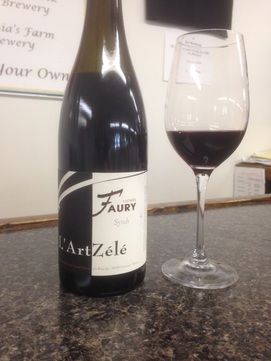 To celebrate our 22nd anniversary, we like to break out some wines for the Insider's Pick that are a little bit outside the usual range of wines that we usually taste. But we also still want to do what we do best, which is find wines that bring quality beyond their price point. In the Northern Rhone, where vines cling to almost impossibly steep riverbanks terraces many centuries ago, finding value can be just as difficult as the farming. The famous names like Hermitage, Cote-Rotie, and Cornas command top dollar world wide, so you are forced to look on the outskirts to find something similar for less. In this case, a mere 50 yards outside the lines of Cote-Rotie puts you into the Faury's l'Arselie vineyard, close enough to see the individual grapes in a cluster hanging within the Cote. The vinification and care is the same as the estate's famed Cote-Roties, including the traditional pigeage (breaking down of the cap of grapeskins to help extract the color) being done by foot. Youthful and inky purple in the glass, the aroma is pure Northern Rhone violets and blueberries, cool currants and hints of cured meats, a very savory and much less extracted version of the grape than is found in most other parts of the world. Even in their top wines Faury uses very little new oak, and the used neutral barrels provide an environment for the natural complexity of the grape to show through with no adornments. On the palate the texture is polished and almost Burgundian with the fine tannins and bright acidity, with more of the blue fruit skins and almost squid ink-like savory presence through the finish. The youth of the wine shows at first with a fairly straightforward complexity, but time open brings out a lot of the subtlety found in the aromas, and even starts to add body. In past decades wines on the fringes of the Northern Rhone hot spots couldn't get anywhere near this expression, but improved winemaking and viticulture has enabled vintners to extract every last bit of potential. While some may not consider ANY wine more than $30 a value, those that have tried wines 2x-3x the price and found only marginally better wines know how much quality is appearing here. 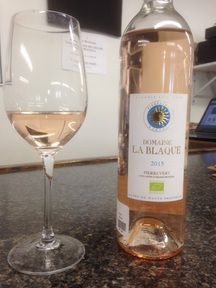 While many Rose wines start arriving in April or May, the 'real' season doesn't truly start until June, when the Summer heat takes hold day after day after day, and the most interesting artisan bottlings have all made it over to our shores and had a chance to settle in. Even though the Rose style is by its nature made in a fairly quick process, the better ones are still made by those that are more patient, and often those producers that are eager to be the first ones in the market can end up with a more lackluster wine. This wine from one of the more interior sections of Provence has been a big store favorite over the last several vintages, and even though it's a little later to the party it is always worth the wait. Extremely pale salmon color in the glass in the classic Provencal presentation, the aromas show off this estate's ability to intermingle both red and white characters in the same wine. Several vintages back, the Wine Advocate's review of their estate red contained tasting notes with both 'black cherry and raw beef liver' AND 'savory shrimp shell' comparisons; a favorable review of 90 points, at that. While the Rose isn't that big of a paradox, the blend of red grapes (Syrah Grenache, and Cinsault) and white (Vermentino) bring both strawberry and seashell tones to the same glass and make it work well. The palate has great roundness thanks to the time taken early on to draw every bit of texture possible, bringing out a long dry watermelon and fruit leaf finish. Complex enough to pair with lots of foods, even things with some spice, as well as worth chilling down and enjoying on its own for all the unique nuances. |
The Best of the Best.We offering free tastings on these wines in the store every Thursday and Friday, and a 10% discount off the retail price through the duration of the day. Come on by and give them a try! Archives
July 2024
Categories |
Location |
|

 RSS Feed
RSS Feed